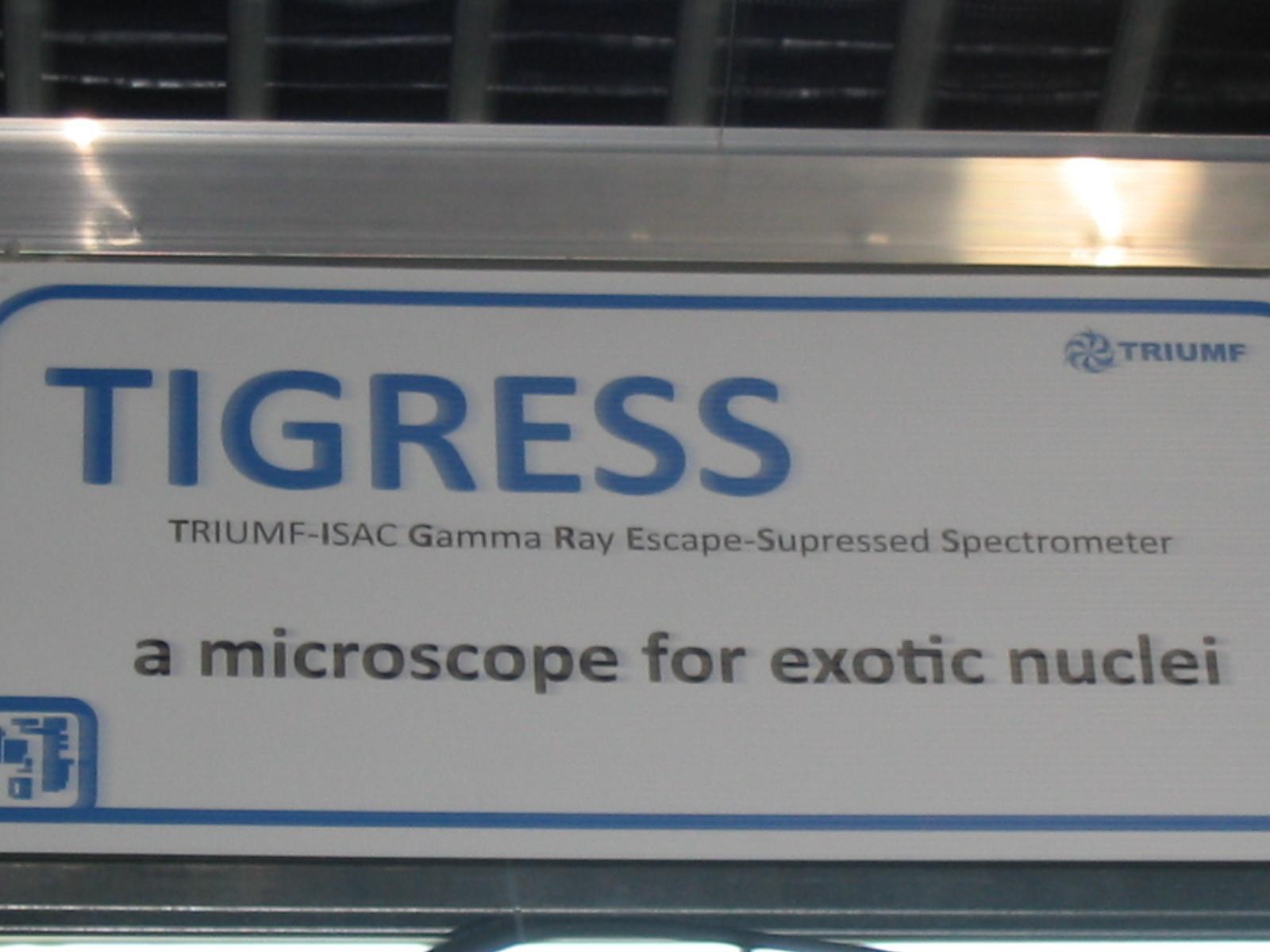
The TIGRESS experiment was like TUDA's. TIGRESS is studying what goes on inside an exploding star. It's doing the research a bit differently from TUDA in that TIGRESS is used to study gamma rays (a form of radiation) to learn about the subatomic particles.
Nuclei are sped up (accelerated) towards a target particle. The accelerated nuclei don't actually hit the target particle (as shown in figure 1). Instead, it nears the target particle enough to be repelled by the target particle, changing the particle's course. As this occurs, the nuclei emits a gamma ray. Once the gamma ray (shown in Figure 1 as a squiggly, red line) is emitted, it is detected by germanium (a material useful in nuclear physics) detectors. Working backwards, researchers then determine the direction of the particle. This gives researchers information on the reaction that took place.
Another interesting fact I learned while working with TRIGRESS was that the popular picture of a nucleus—with protons and neutrons packed together—is wrong. Researchers have come up with different and more likely models (Figure 2). It's been known that the previous "solid nucleus" model has been wrong since the early days of nuclear physics, but it is still displayed in schoolbooks for simplicity.
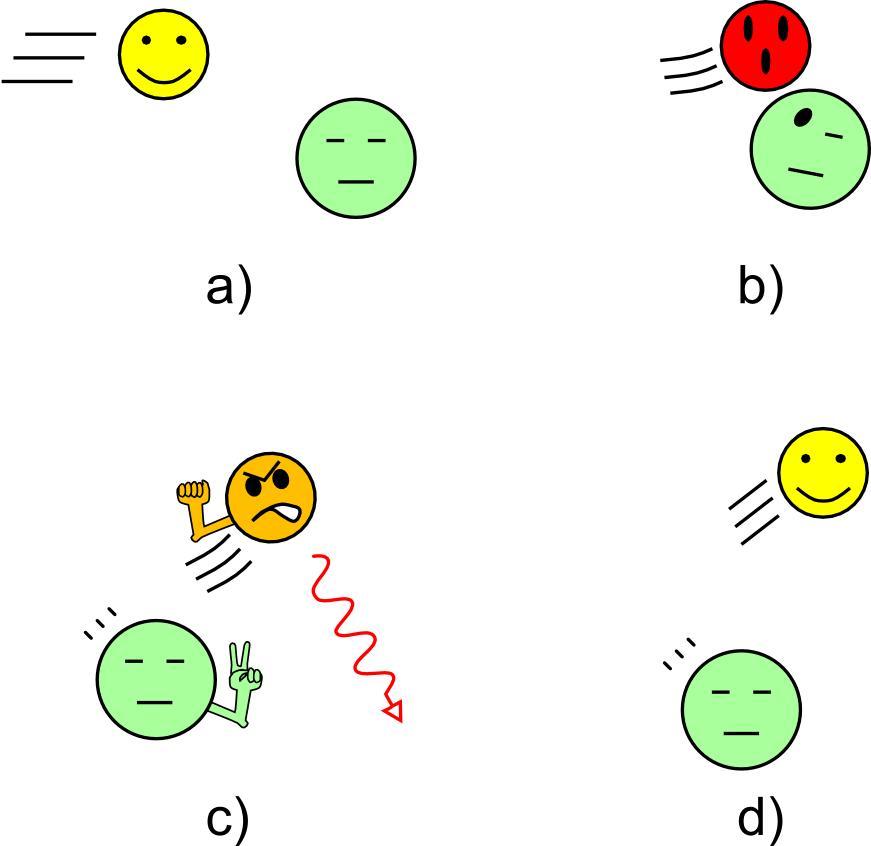 | 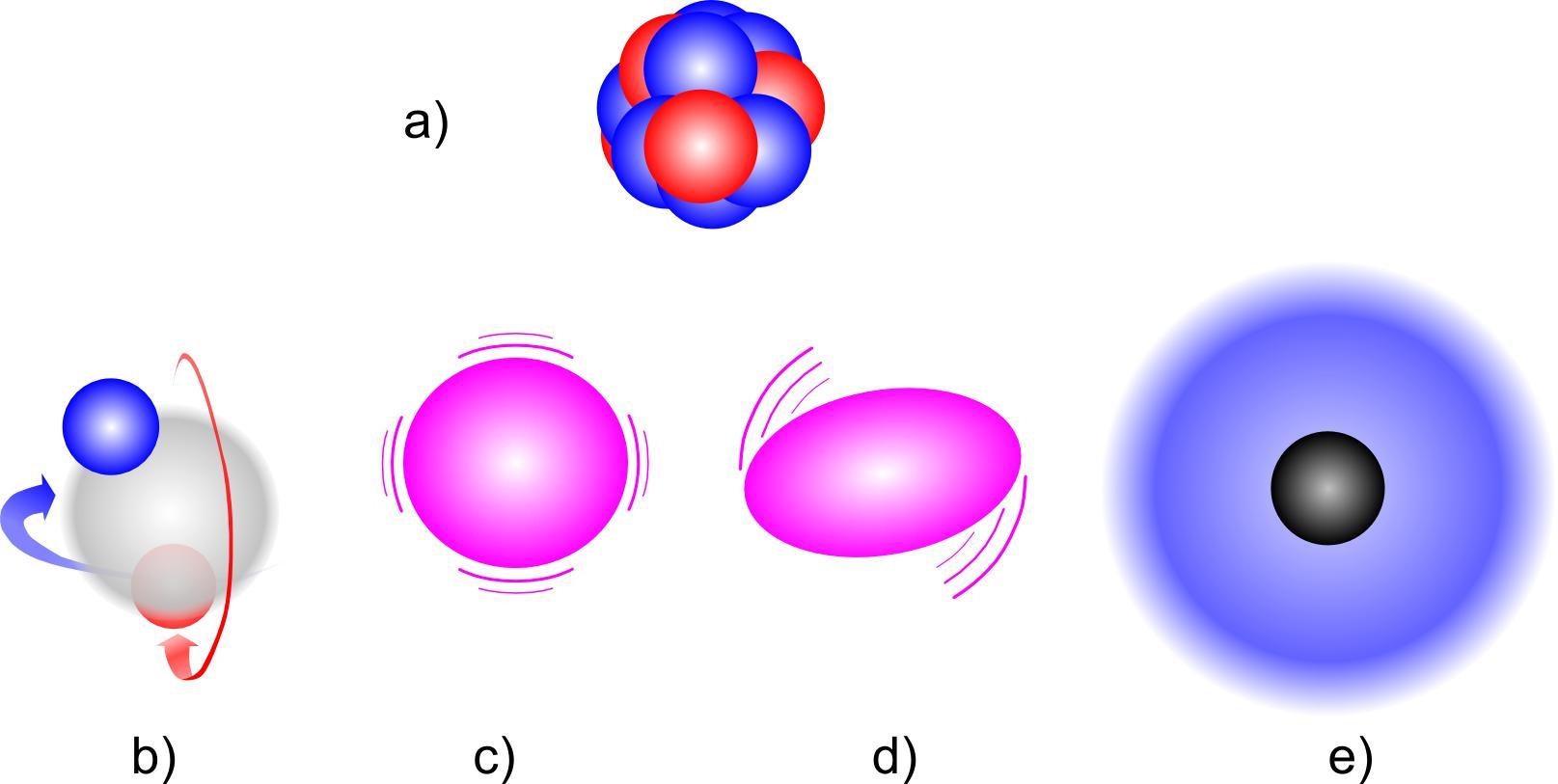 |
Figure 1: An accelerated nuclei (shown as yellow, | Figure 2: Different models of the nucleus. The top is certainly incorrect. |
While at TIGRESS I didn't just learn about nuclear physics, I also spent a lot of time doing work. I tested cables, helped piece together circuits, and prepared wires—all done repetitively and for a long time. Affairs at TIGRESS were getting hectic, the type of wires used had been changed at the last minute and everyone was scrambling to get the accelerator ready. So I got some hands-on experience as a result!
I was also lucky enough to see actual presentations from University students interning at TRIUMF. The students presented data and background information on the projects they were working on and were questioned by experienced scientists at TRIUMF. These scientists relentlessly asked very specific questions and some of the students found they had made errors. The whole event gave me a striking impression of scientific inquiry (in addition to sympathy for the students). It really is a no-holds-bar inspection of ideas, with fierce, yet professional criticism. You can hear this said a thousand times, but to really understand what it means, you have to witness it first hand.
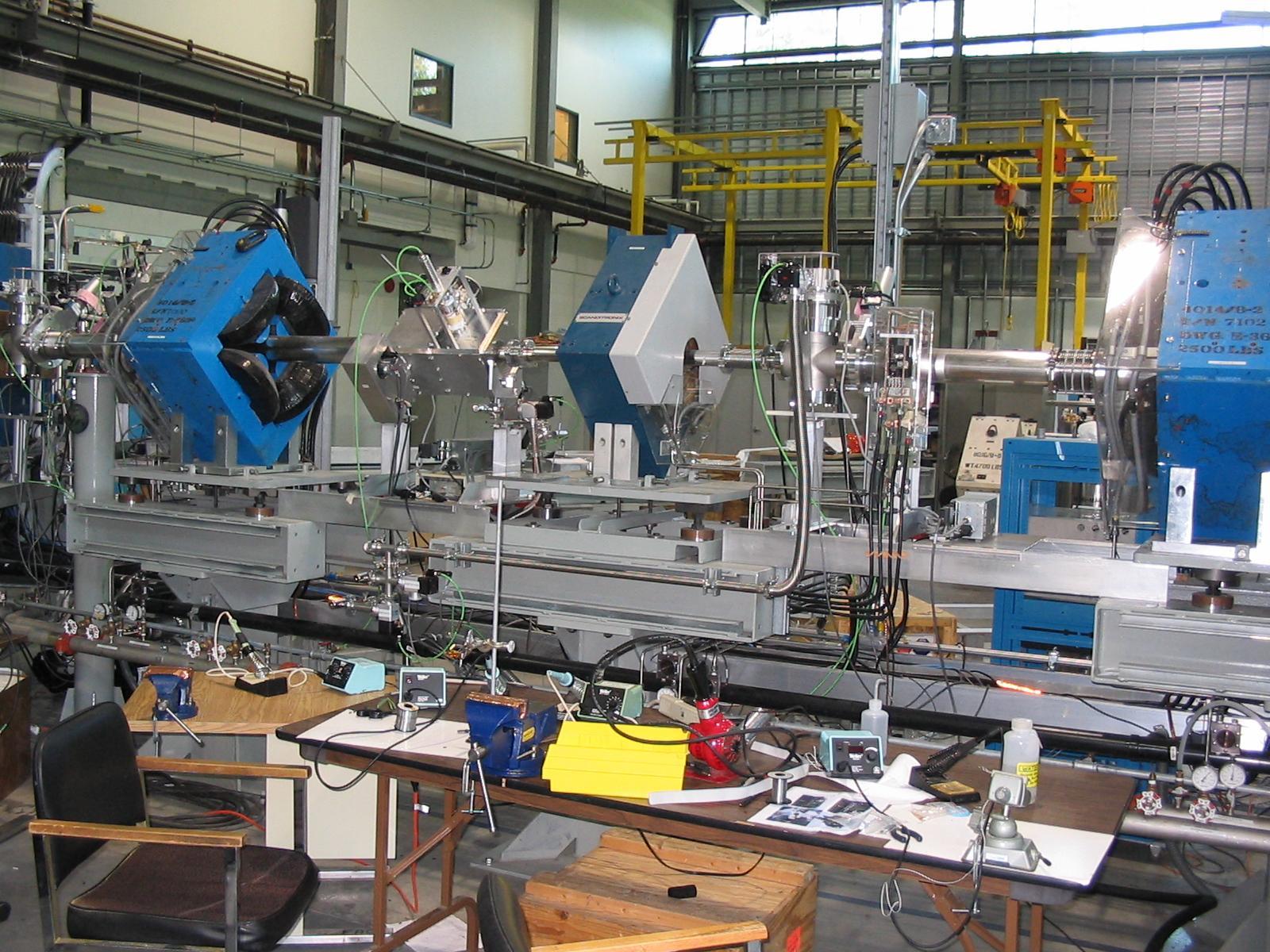 | 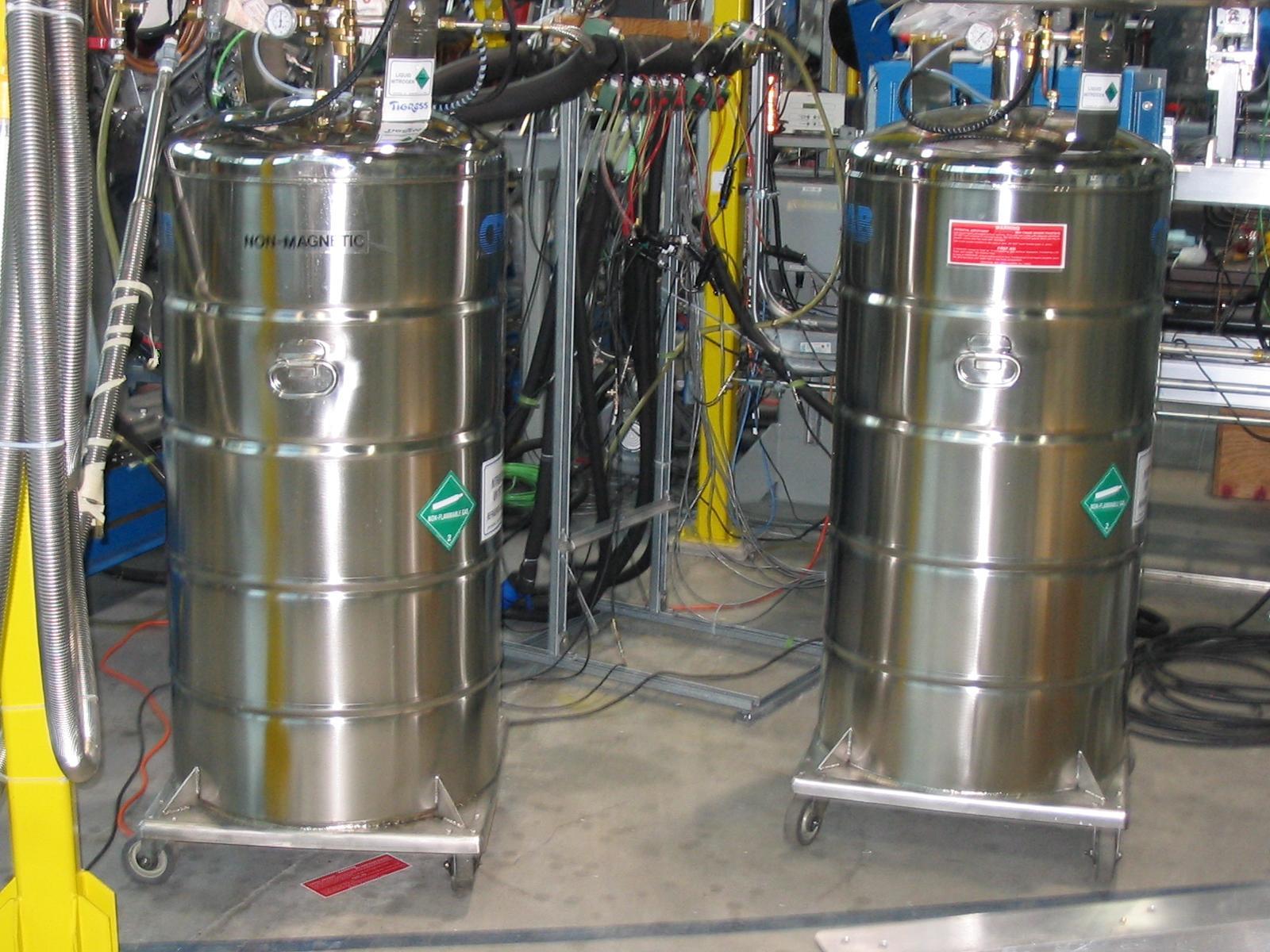 |
| Figure 3: A section of the TIGRESS accelerator and a typical sample of a researcher's workspace. | Figure 4: Two tanks of liquid nitrogen used for cooling. |
This week with TIGRESS showed me the truth about science: it's messy and unrelenting. I saw countless improvisations and the fiercest grilling ever in a professional environment. But, at the end of the day, scientists are driven by a sincere passion for their field. Whether it be Greg Hackman (a very approachable TIGRESS researcher) eagerly explaining any detail of the project with care, or researchers working for hours preparing the particle accelerator, the drive is undeniable and a sight to behold.
By: Dylon Martin
